Table of Contents
- Wine Quality Prediction Using Machine Learning: Everything You Need to Know
- How to Use Wine Quality Data for Machine Learning Projects?
- Assessing ML Classifiers: Finding the Best Method for Wine Quality Prediction
- Reinvigorating the Time-Honored Tradition of Winemaking with Machine Learning
- FAQ
As Goethe once said, “Life is too short to drink bad wine.” So why would one waste their time if machine learning is already in action to help us with predicting wine quality? This case has piqued our interest at Label Your Data, and we’re sure it’ll be interesting for you, too.
In general, an informed consumer is always guided by nothing less than the quality of the product. This is the golden rule when it comes to making a reasonable purchase. However, product quality certification in the wine industry is a time-consuming and cost-intensive process for manufacturers. Therefore, machine learning has become an essential tool for replacing human tasks in modern wine production. By automating the process of wine quality prediction, ML saves both the resources and time for winemaking businesses.
Wine quality prediction using machine learning is becoming increasingly popular today. Basically, it’s the computer algorithm that can tell if there’s a difference between a $5 bottle of wine or a $100 one. There are many educational step-by-step guides by professional programmers using open-source wine quality prediction datasets and teaching how to use ML for wine quality prediction. But we decided to break this down into a more detailed and technical overview.
Using machine learning algorithms is a game-changing technique for true wine connoisseurs looking for cult wine. Even if you aren’t a wine type of person, these machine learning capabilities might fascinate you. Keep reading to discover more about advanced machine learning applications for the wine industry!
Wine Quality Prediction Using Machine Learning: Everything You Need to Know
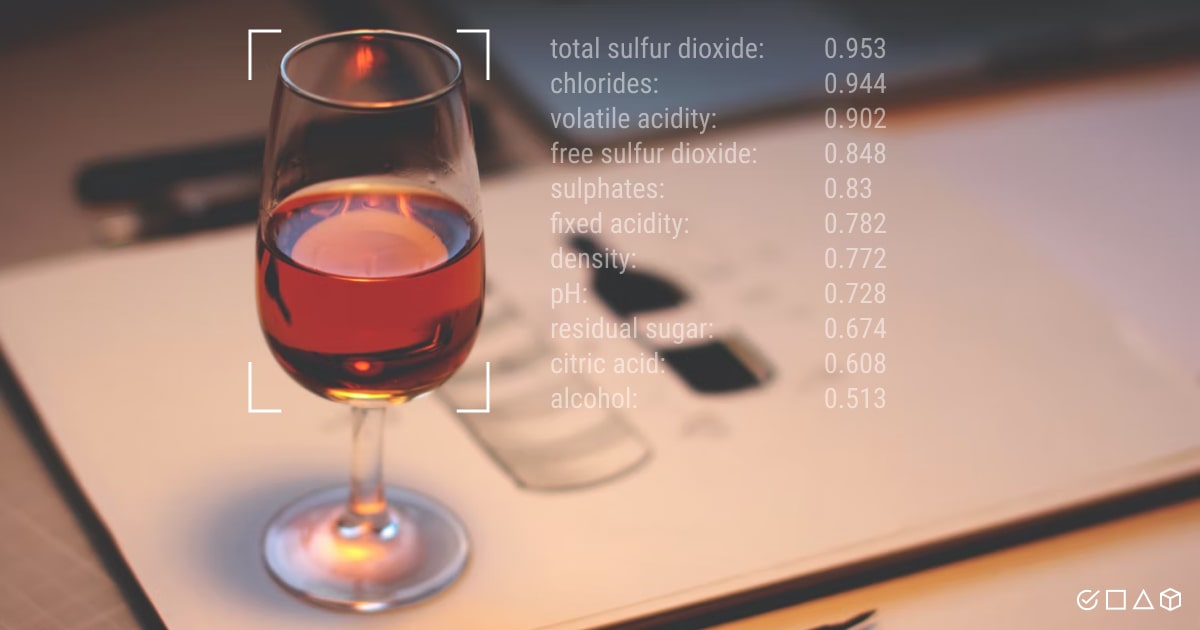
Wine tasting performed by human experts is a subjective evaluation, but a machine learning model trained to measure wine quality is not. The reason for that is that you use specific wine data and build a prediction algorithm in a strictly defined order.
Wine experts follow their personal preferences, while ML models provide accurate predictions in a more objective way (yet, this point might be argued as well). Even though the machine learning processes are led by humans, it’s the right input data (labeled, of course) that ensures the most correctly predicted results. Take for example the lessons learned from data annotation in agriculture regarding the importance of precise labeling.
Machine learning models can tell us exactly what makes a good quality wine. And, surprisingly, the process is quite simple. All it takes is wine data collection, preparation, and finding the most accurate and effective wine quality classification approach by comparing classification scores of different ML methods.
Despite being simple, wine quality prediction relies on well-performed image annotation services that are paramount in refining the accuracy of ML models. They help the algorithm to recognize visual attributes that define the quality of wine.
Machine Learning Classifier
What is a classifier in machine learning? Classification in ML is exactly what it sounds like: it’s an algorithm that automatically categorizes data into classes. An ML classifier needs training data to understand how certain input variables relate to a particular class.
Labeled training data for wine quality prediction is just as important as for any other industry. For instance, you need data annotation for retail to analyze customer preferences and purchasing patterns. Similarly, you need data annotation to refine the ML algorithm that predicts wine quality based on nuanced attributes, or input variables we’ll discuss shortly.
In the wine quality prediction case, a machine learning classifier takes some input data and tries to predict which class it belongs to: low-quality wine, mediocre wine, or high-quality wine. Some classifiers used for wine quality prediction in machine learning are:
- k-Nearest Neighbor (KNN)
- Decision Tree
- Random Forest
- Support Vector Machines
- Stochastic Gradient Descent
- Linear Regression
- Artificial Neural Networks (ANN)
- Naive Bayes
Input Variables
What is the best way to know if a wine is good? The quality of wine can be judged by the smell, flavor, and color of the beverage. But machines obviously cannot taste wine, smell it, or perceive the colorful nuances of wine as humans do. Thus, machines require more detailed and clear information (i.e., feature variables), so that one can build a model for white or red wine quality prediction using machine learning.
The input variables for wine quality prediction using machine learning are based on physicochemical tests that are laboratory-based. As such, the success of a wine quality prediction ML model depends on the correct understanding of both red and white wine physicochemical properties. Let’s see what wine data is used for quality prediction, with a handful of interesting facts for each data attribute:
- Fixed acidity. The predominant fixed acids in wine, such as tartaric, succinic, citric, and malic acids.
- Volatile acidity. The high acetic acid present in wine, which causes an unpleasant vinegar taste.
- Citric acid. A weak organic acid used to increase the freshness and flavor of wine.
- Residual sugar. The amount of sugar left after fermentation.
- Chlorides. The amount of salt in wine. The lower chloride rate creates better quality wines.
- Free sulfur dioxide. SO2 is used for preventing wine from oxidation and microbial spoilage.
- Total sulfur dioxide. The amount of free and bound forms of SO2.
- Density. Depends on the alcohol and sugar content. Better wines usually have lower densities.
- pH. Used to check the level of acidity or alkalinity of wine.
- Sulfates. An antibacterial and antioxidant agent added to wine.
- Alcohol. The percentage of alcohol in wine. A higher concentration leads to better quality.
The output variable is, therefore, the quality rating of wine that is based on sensory data and scores from 0 to 10. Altogether, these features are crucial for getting the most accurate and reliable predictions from a machine learning model.
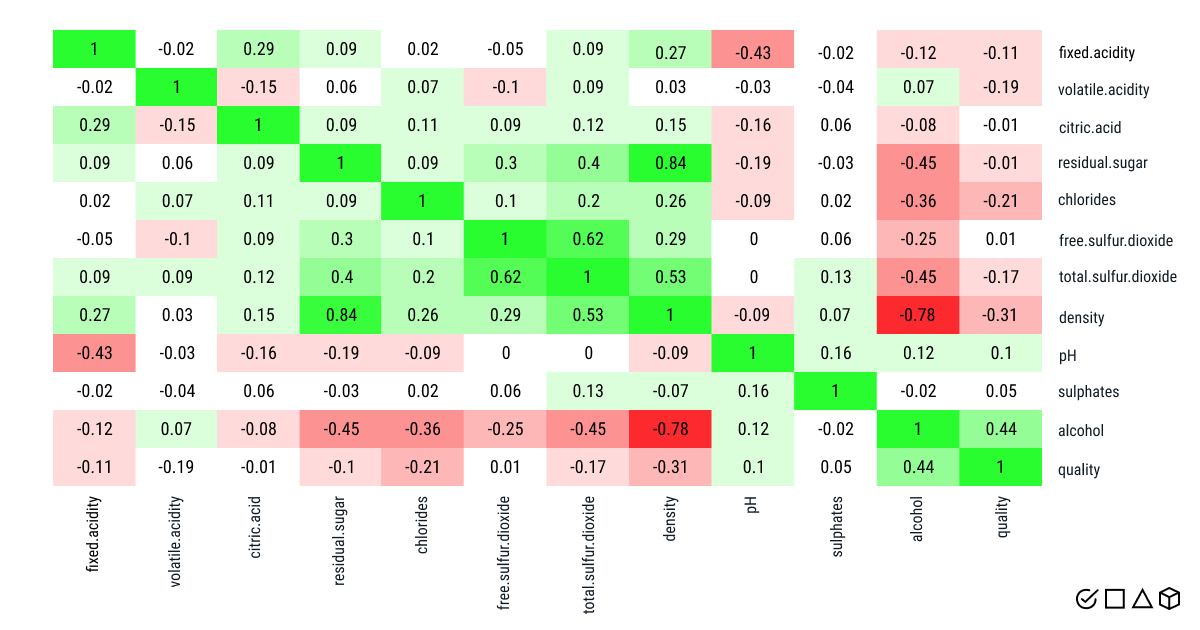
Wine Quality Prediction Model: Process Overview
Once you have the right data and understand the meaning behind this data through wine quality dataset analysis, you can proceed to the actual process of creating an ML model for wine quality prediction. We’ll first examine the overall process and provide the roadmap for this task. In the next section, you’ll read about the basics of preparing wine quality data to ensure your ML model is trained on the quality data and provides the most effective results.
The main steps for building a machine learning model to predict the quality of wine include:
- Importing the libraries.
- Accessing and importing the wine quality datasets into a dataframe.
-
Analyzing and processing wine data:
- Checking for null values.
- Analyzing the correlation between the variables.
- Converting data to binary categories.
- Splitting features and labels.
- Normalizing the features.
- Splitting training (for model training) and testing data (for predictions).
-
Constructing an ML model:
- Model fitting.
- Model prediction.
- Model testing.
- Cross-validation.
-
Implementing different classification approaches to the prepared wine dataset:
- Evaluating model performance based on classification scores.
- Calculating the classification accuracy score.
- Assessing the results.
- Analyzing feature importance.
- Drawing conclusions and selecting the best classification method.
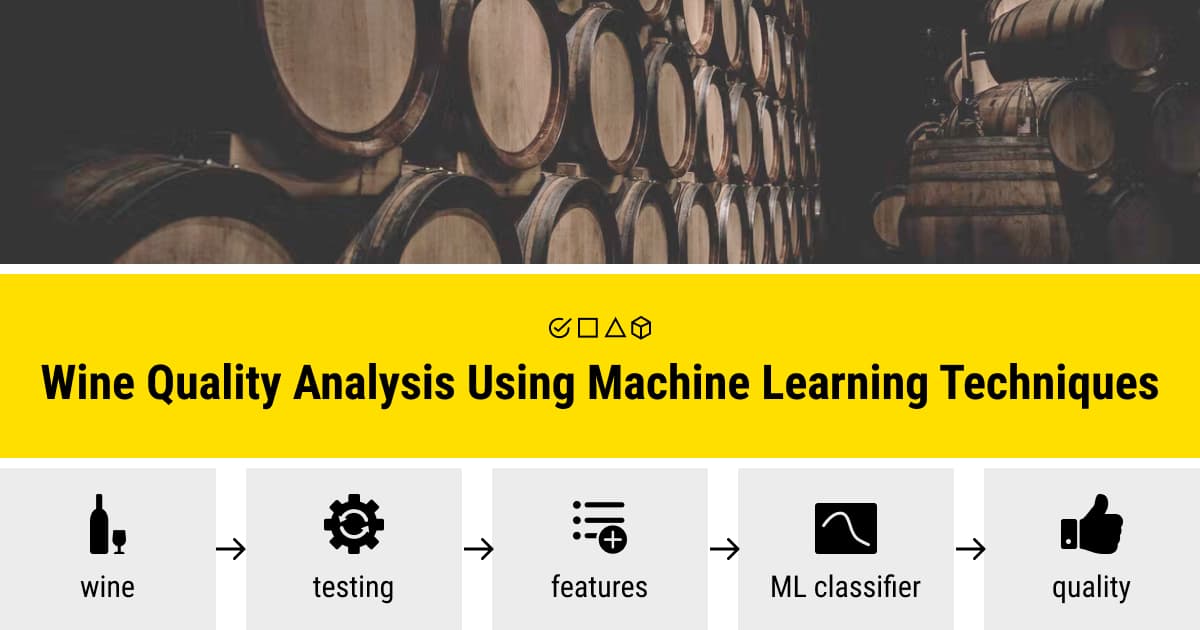
How to Use Wine Quality Data for Machine Learning Projects?
As has already been mentioned, wine quality evaluation is based on sensory and physicochemical data. And it may be argued that the assessment performed by a trained wine panelist provides more credible and accurate results. However, this process requires winemaking businesses to invest a lot of money and time into achieving such results.
Let’s learn the ropes of preparing wine quality data to build an effective ML classification model! Or simply reach out to our team of experts, and we will handle the task of preparing your wine data to create a high-performing model for quality prediction.
Wine Quality Dataset Analysis
Wine quality datasets are generally considered for classification or regression tasks. Typically, the classes of wine are ordered and not balanced. Predicting wine quality in machine learning using wine quality datasets requires outlier detection algorithms to identify the high-quality and poor-quality wine.
Detecting outliers is crucial for ML because the quality of data that it provides is as important as the quality of a prediction or classification model. And there are usually 12 attributes (input variables discussed above) in such datasets that help build an effective ML model for quality prediction.
Where can you find and download free ML wine datasets for quality prediction?
Preparing Wine Data
Correctly prepared data is the cornerstone of an effective machine learning model and accurate predictions.
- Standardizing feature variables. The process of transforming the data to get a mean of 0 and a standard deviation of 1 in the data distribution. This helps even out the range of the wine data.
- Splitting data. The process of splitting wine data into training and testing sets. This is essential to performing cross-validation of the ML models to identify the most effective approach to quality prediction.
- Building an ML model. When the wine quality data is all set, one can start building, training, and testing a machine learning model by using different classification approaches. Depending on the case, it can be either a model requiring NLP services to extract valuable insights from expert reviews and consumer feedback, or the one based on computer vision services.
Feature Importance
Having all the necessary data on hand is not enough. It’s also critical to understand exactly how each of the features relates to wine quality and what role it plays in the ML modeling process.
So, how are wine-related variables correlated to its quality? Such a correlation can be analyzed using the heat map that can demonstrate the interdependence of each variable in detecting the quality of the wine. Therefore, one can observe that some features are strongly correlated to wine quality, which means they play the most pivotal role in the ML model. The top three features are alcohol, volatile acidity, and sulfates.
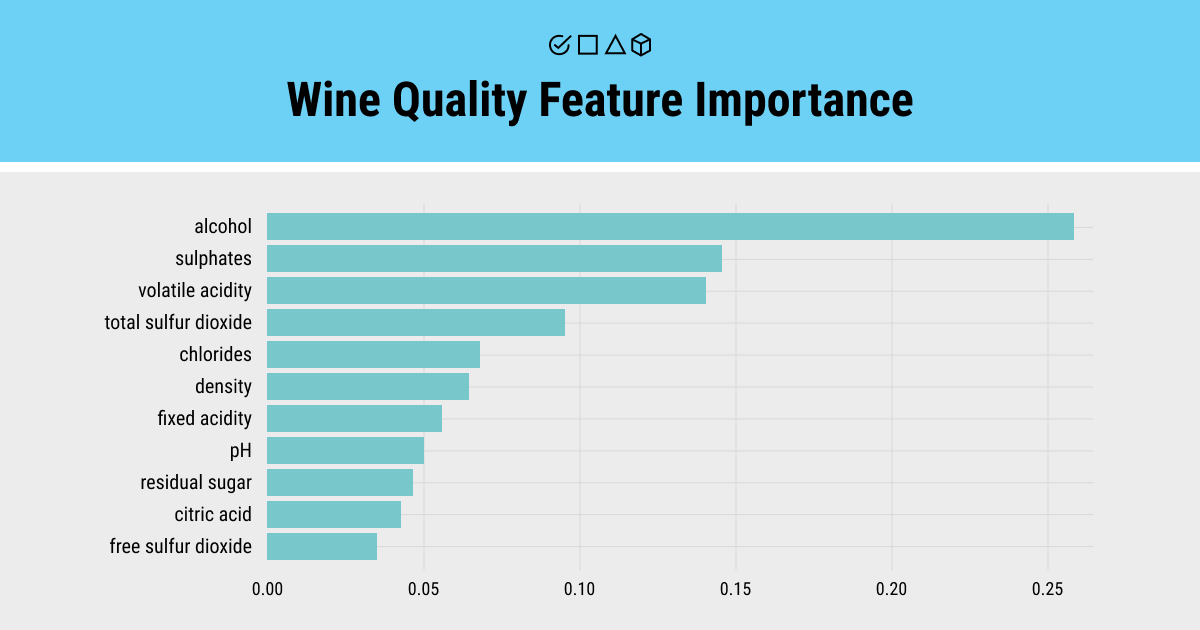
Assessing ML Classifiers: Finding the Best Method for Wine Quality Prediction
At this point, wine quality analysis using machine learning methods is a feasible one-size-fits-all approach to solving emerging issues in today’s winemaking segment. The only problem here is to select the most suitable ML approach to wine quality prediction. As we already know, this can be done by assessing the classification scores.
Based on one wine quality prediction project report, the most effective ML methods for wine quality analysis are Support Vector Machine (SVM), Artificial Neural Network (ANN), and Random Forest. Although there are different opinions among ML researchers, we tried to collect all the results and provide the simple average for the accuracy of the ML models in predicting specific wine quality:
- Random Forest (65.83% - 81.96% + low error rate): Generates superior wine quality predictions with the highest accuracy score of 88%.
- SVM (57.29% - 67.25%): The average score ranges between 56-68%. However, in some studies, the accuracy of the algorithm reaches 83.52% from the red wine and 86.86% from the white wine.
- ANN: The accuracy score is 85.16% from the red wine and 88.28% accuracy from the white wine. The best accuracy results on both red and white wine datasets.
- Naive Bayes (46% - 55.91%): The accuracy is 46.33% from the red wine and 46.68% from the white wine.
The accuracy of the wine quality prediction scores can be significantly improved by increasing the amount of fixed acidity, citric acid, sulfates, and alcohol, as well as decreasing the amount of volatile acidity and chlorides. As for the accuracy of the ML models themselves, it can be also enhanced by using a larger dataset with a greater balance between low- and high-quality wines.
Reinvigorating the Time-Honored Tradition of Winemaking with Machine Learning
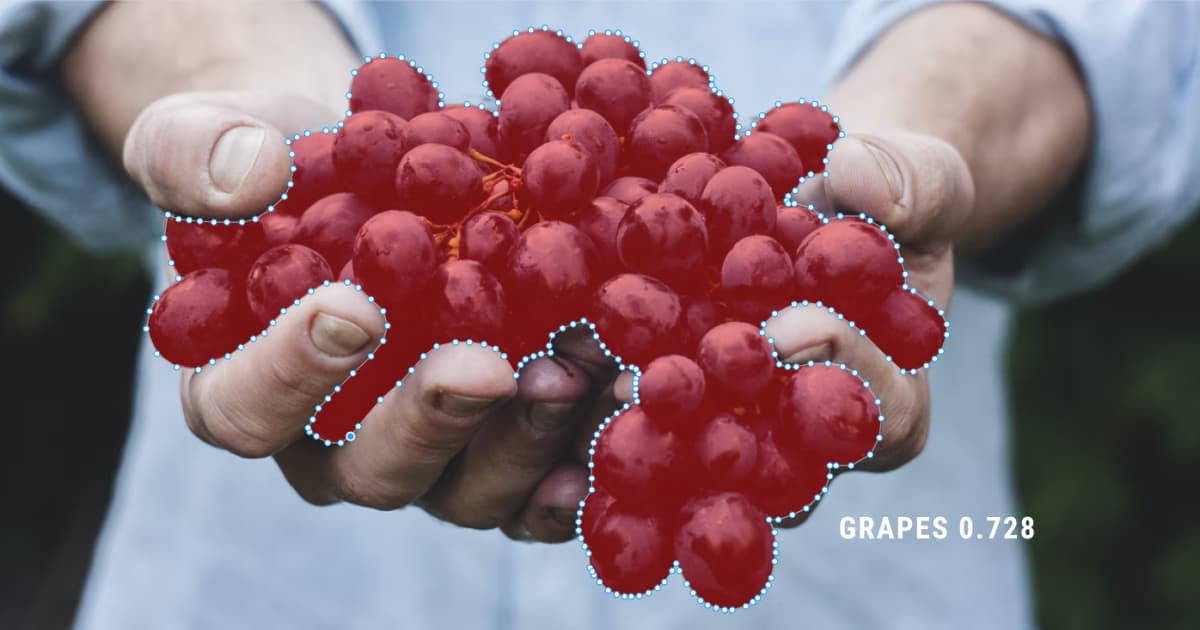
Discussing the wine quality issues in an overly complex and technical area of machine learning cannot go without a lyrical mood, of course. However, machine learning algorithms prove to be highly effective for wine quality assessment in the modern wine industry. Even though there’s still a lot of room for growth, we believe that ML can be safely used for product quality certification.
We at Label Your Data can’t stress the importance of machine learning solutions for modern businesses enough. Why, you ask? The answer is simple: automation works wonders for today’s manufacturers in terms of quality, time, speed, and effectiveness of the task assigned to ML. Contact our team to find out more about different solutions that we have to give you a hand with predictive modeling in ML …
… and be careful to trust a person who does not like wine (Karl Marx).
FAQ
Which ML model is used for prediction?
The choice of the machine learning model for prediction depends on the nature of the data and the specific problem at hand. The most common types include machine learning regression models, decision trees, support vector machines, and neural networks, each selected based on its suitability for different scenarios.
What kind of data do we require for predicting the red wine quality?
For red wine quality prediction, you need relevant data such as chemical composition, acidity levels, residual sugar, alcohol content, and sensory attributes that need to be collected and analyzed.
Which algorithm is used for wine quality prediction?
Various ML algorithms can be employed for the prediction of wine quality, depending on the dataset and specific requirements. In comparing optimization algorithms for wine quality prediction, the results indicate that the Adam optimizer surpasses Gradient Descent in terms of the best prediction results.
Table of Contents
Get Notified ⤵
Receive weekly email each time we publish something new:

